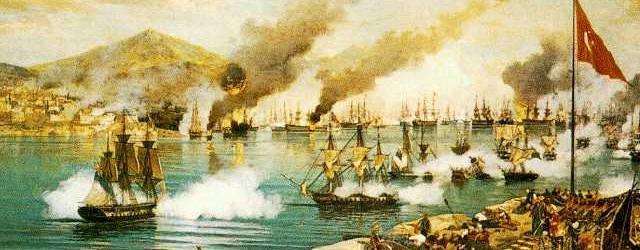Russian-Turkish wars are a series of conflicts of the respective states. The reasons for these armed clashes naturally stemmed from the neighboring geographical location and the mutually exclusive interests of the two powerful states. The Russo-Turkish wars in the XVII – XIX centuries were fought mainly for supremacy in the Black Sea basin and adjacent land areas. However, this protracted series of wars has changed its character over the centuries due to
changes in the geopolitical situation in the region. So, the Russian-Turkish wars in the XVII and XVIII centuries were the result of the aggression of the Ottoman Empire and the Crimean Khanate vassally dependent on it in the Northern Black Sea region. On the part of Russia, these conflicts promised in the event of a successful outcome the accession of new coastal territories and, of course, access to the Black Sea.

However, already in the second half of the eighteenth century, the Russian state was steadily stepping south. The Russo-Turkish wars of this period acquire an aggressive character from the northern state. And if in the middle of the XVII century the Turks instilled fear throughout Europe, besieged Vienna, then a century later they are increasingly lagging behind in the military-tactical plan from Europe, which is undergoing a scientific and technological revolution. From this period, Europeans gradually began to crush the once powerful Iran and Turkey. Which, let's say, looking ahead, by the beginning of the 20th century, become semi-colonial possessions of the states of the Old World. The Russo-Turkish wars in the 18th and especially the 19th centuries became part of the resolution of the so-called Eastern question (which was to divide the weakened Iran and Turkey among themselves)
Conflict of 1676–1681For example, the war of the middle of the XVII century, in 1676-1681, was the result of Turkish-Tatar aggression in Ukrainian lands, their capture of Podolia (previously owned by the Poles) and the claim to the entire Right-Bank Ukraine. As a result of the Bakhchisaray agreement, signed in 1681, the Russian-Turkish border was established along the Dnieper from its thresholds, to territories just south of Kiev. Interestingly, just 50 years before this, the Ottomans really threatened the existence of the Polish state. He was then saved only by Zaporozhye Cossacks in 1621.
Russo-Turkish War of 1768–1774
This conflict has become one of the key in the history of military clashes. Turkey, as before, had views on the expansion of possessions in the Black Sea region and the Caucasus. Russia's successful outcome was finally promised the seizure of Crimea and the coast closest to the ports. During the fighting, brilliant military talents were demonstrated by generals Alexander Suvorov, Peter Rumyantsev and admirals Aleksey Orlov and Grigory Spiridonov, who defeated the Turkish troops and navy in a number of battles. In 1774, a peace treaty was signed in the Bulgarian village of Kuchuk-Kainardzhi , according to which the Crimean Khanate passed under the protectorate of Russia. The last departed several important ports on the Black Sea coast.
Russian-Turkish war of 1877
This clash was the result of the national liberation struggle of the Christian peoples of the Balkans, who for centuries remained under the yoke of Muslim Turkey. This movement was used by the Russian Empire in their favor. Having come to the aid of the Serbs, Bulgarians and Greeks, Russia again inflicted a number of painful defeats on the Ottomans. This time they were almost completely and completely driven out of the European continent, having managed to leave behind only the scrap on which Constantinople was located. In the liberated lands, Bulgarian independence was restored. A number of territories have acquired Russia, Austria-Hungary, Serbia and Romania.